Realfinance Network (REFI) Explained: What the Crypto Coin Is and How It Works
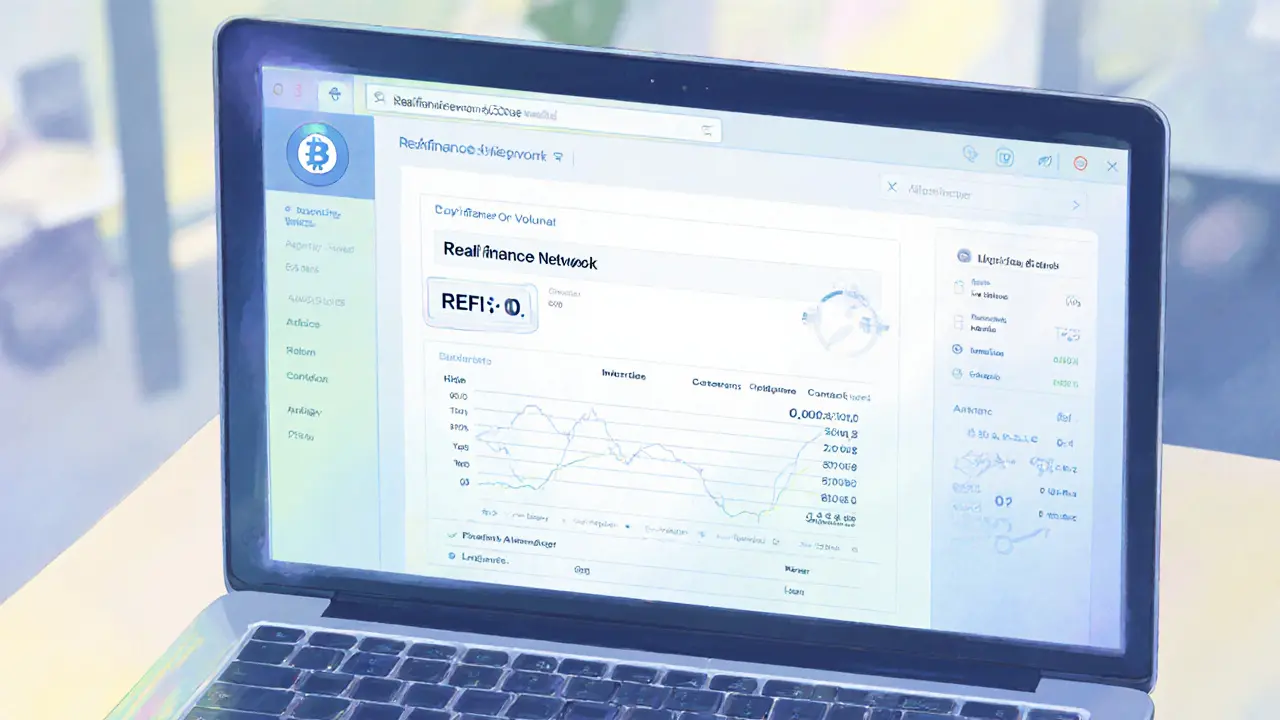
Realfinance Network (REFI) Token Checker
Current Token Status
Token Name: Realfinance Network (REFI)
Contract Address: 0x641a6Dc991A49f7BE9Fe3C72c5d0FBb223eDb12f
Blockchain: Ethereum (ERC-20)
Current Price: $0.00000199
24h Volume: $0
All-Time High: $0.0497 (Apr 2021)
Roadmap Progress
Red Flags
- Zero Trading Volume: No active market for REFI
- No Exchange Listings: Not listed on major exchanges
- Missing Community: No active social channels or support
- Unrealized Roadmap: Features planned for over 4 years without delivery
Investment Risk Assessment
Risk Level: High Speculative
Recommendation: Treat as high-risk speculative asset or avoid entirely.
Without tangible deliverables, active development, or community engagement, REFI lacks real utility.
Verification Results:
If you’ve ever scrolled through a list of obscure crypto projects and wondered whether Realfinance Network is worth a closer look, you’re not alone. The token, known by its ticker REFI, markets itself as a DeFi ecosystem that bridges gaps between centralized finance and the broader decentralized world. Below we break down what REFI actually is, where it lives on the blockchain, how it’s been performing, and why the project’s current state raises several red flags.
Quick Facts
- Token name: Realfinance Network (REFI)
- Contract address: 0x641a6Dc991A49f7BE9Fe3C72c5d0FBb223eDb12f
- Claims to operate on Ethereum and Binance Smart Chain
- All‑time high price ranges between $0.0061 and $0.0497
- 24‑hour trading volume is effectively $0 as of Oct2025
What Is Realfinance Network?
Realfinance Network is a decentralized finance (DeFi) platform that issues the REFI token as its native utility coin. The project positions itself as a hybrid solution that offers a crypto‑investment platform, a swap service, and future farming and staking products. Its stated goal is to increase financial inclusivity by giving users direct control over assets without relying on traditional banks.
In practice, the only publicly visible component is the REFI token itself. The website lists a roadmap that promises a swap on Binance Smart Chain, farming pools, and staking rewards, but none of these features have been launched as of the latest check in October2025.
Technical Foundations: Ethereum or Binance Smart Chain?
Ethereum is a public, permissionless blockchain that supports ERC‑20 tokens. According to Coinpaprika, REFI was initially deployed as an ERC‑20 token on Ethereum, which matches the contract address provided in the project’s whitepaper.
Binance Smart Chain (BSC) is a parallel network that uses BEP‑20 tokens and offers lower transaction fees. The Realfinance Network team later announced plans to build a swap platform on BSC, suggesting a dual‑chain strategy. However, no functional BSC‑based swap has been released, and the token’s contract address remains the Ethereum one.
This mixed messaging creates confusion for potential investors. If a token lives on two chains, users need clear guidance on which address to use, how bridges work, and where liquidity resides - none of which is currently available.
Market Performance and Price Data
The market data for REFI is fragmented. Different price aggregators report slightly different figures, and most platforms show negligible or zero trading volume. Below is a snapshot of the latest numbers from five major sources.
| Source | Price (USD) | 24‑h Volume (USD) | All‑Time High (USD) |
|---|---|---|---|
| Coinbase | $0.00000198 | $0 | $0.0497 (Apr2021) |
| CoinMarketCap | $0.000001999 | $0 | $0.006129 (varies by source) |
| Kriptomat | €0.000001860 | $0 | Not listed |
| DropsTab | $0.00008754 | $0 | Not listed |
| Coinpaprika | $0.00000199 | $0 | $0.006129 |
The fully diluted valuation (FDV) reported by Coinbase stands at roughly $2.23million, but with zero daily volume the figure is largely theoretical. Compared to its peak, the token’s price has dropped close to 100% across all reported data points.

Ecosystem Promises vs. Reality
Realfinance Network’s roadmap outlines three core features that have yet to materialize:
- **Swap Platform** - A decentralized exchange on BSC for swapping BEP‑20 tokens.
- **Farming Pools** - Yield‑generating contracts where users can lock REFI for rewards.
- **Staking** - A mechanism to earn passive income by staking REFI on the platform.
To date, the website provides no live demo, no user guides, and no community channels where developers can ask questions. The lack of tangible deliverables means users cannot test the promised services, making the token’s utility speculative at best.
Red Flags and Risk Factors
Several warning signs should give anyone considering REFI pause:
- Zero Trading Volume: All major price trackers record $0 volume over the past 24hours, indicating no active market.
- **No Exchange Listings**: REFI is absent from reputable exchanges, limiting liquidity and price discovery.
- **Missing Community**: There are no active Discord, Telegram, or Reddit groups, and social media mentions are virtually nonexistent.
- **Unrealized Roadmap**: Core features remain in “planned” status for over four years.
- **Lack of Professional Analysis**: Mainstream research firms and crypto analysts have not published any reviews, suggesting the project operates below the radar of institutional scrutiny.
These factors combine to create a high‑risk profile. Without clear development progress or a functioning ecosystem, the token’s value is primarily speculative.
How to Evaluate REFI (If You Still Want To)
If you’re determined to investigate REFI further, follow this practical checklist:
- Verify the contract address on Etherscan (or BSCScan if a BEP‑20 address appears). Confirm that the token name and symbol match the official documentation.
- Check the project’s official website for recent updates. Look for timestamps on blog posts or development notes.
- Search for any developer activity on public repositories (GitHub, GitLab). Active commits indicate ongoing work.
- Assess liquidity by attempting a small trade on any exchange that lists REFI, even if it’s a peer‑to‑peer platform.
- Join any newly created community channels and gauge the responsiveness of the team.
In the absence of positive signals from these steps, treating REFI as a high‑risk speculative asset - or avoiding it altogether - is the prudent approach.
Bottom Line
Realfinance Network presents itself as a DeFi platform with ambitions to offer swapping, farming, and staking services. Yet, as of October2025, the token sits idle on the Ethereum blockchain with zero trading activity, no functional product releases, and virtually no community. While the idea of a hybrid DeFi ecosystem isn’t inherently flawed, the execution gaps make REFI an unattractive option for most investors.
Frequently Asked Questions
What blockchain does REFI run on?
The contract address 0x641a6Dc991A49f7BE9Fe3C72c5d0FBb223eDb12f is deployed on Ethereum, making REFI an ERC‑20 token. The team has announced plans for a Binance Smart Chain swap, but that product is not live.
Is REFI listed on any major crypto exchange?
No. As of now, REFI does not appear on major exchanges like Binance, Coinbase, or Kraken, and the reported 24‑hour volume is essentially zero.
Can I stake REFI for rewards?
Staking is listed on the roadmap, but the feature has not been launched. Until the platform is live, staking is not possible.
What is the all‑time high price of REFI?
Sources differ: Coinpaprika cites $0.006129, while Coinbase reports a peak of $0.0497 in April2021. Both figures are far above the current sub‑$0.0001 price.
Is Realfinance Network a regulated financial service?
The project provides no public information about regulatory compliance or licensing, which adds to the overall risk.


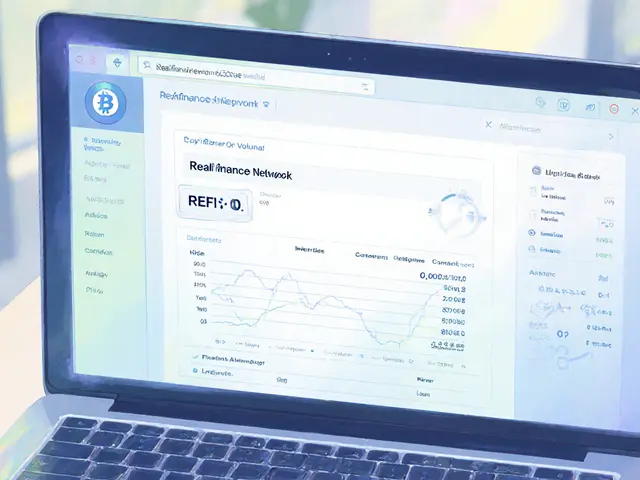
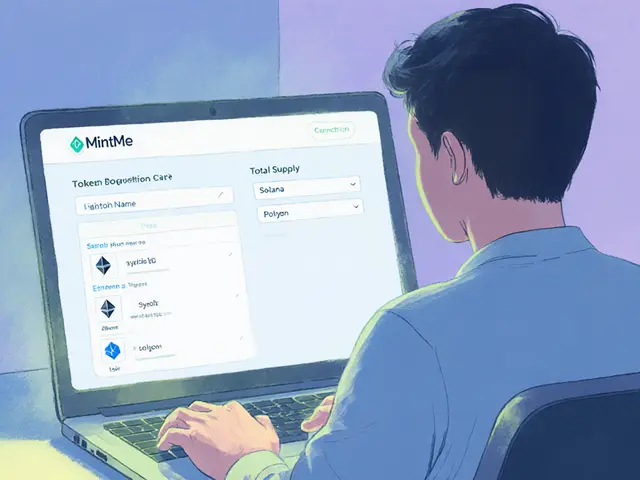

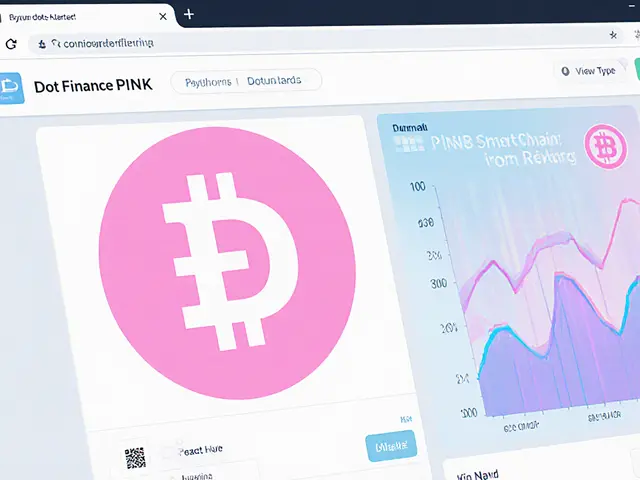
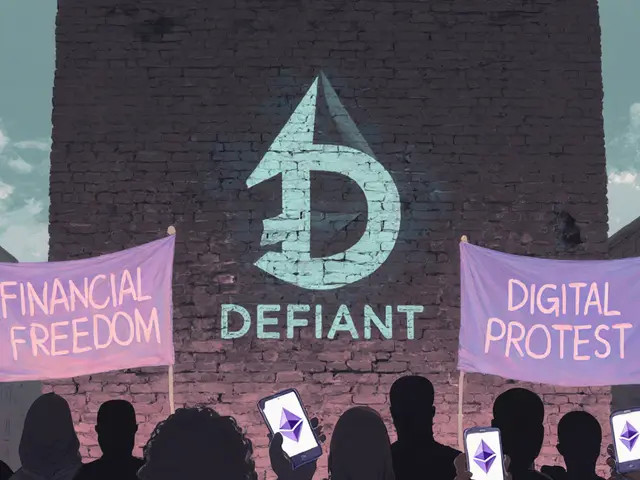

In the grand theater of speculative assets, REFI plays the role of a phantom actor, ever‑present on paper yet never taking the stage. The token’s touted DeFi ambitions feel more like a nihilistic art piece, a mirror reflecting our collective hunger for the next hype. Zero volume, absent exchanges, and a roadmap that has been gathering dust for years speak louder than any glossy whitepaper. One could argue that the very existence of REFI is a social experiment on gullibility, a test of whether optimism can be monetized without substance. As the blockchain whispers of countless projects, REFI remains a silent scream in the void, reminding us that not every token is destined for relevance.
Enough with the sugar‑coating – REFI is a dumpster fire of empty promises and dead code. If you think this token has any real utility, you’re living in a fantasy world.
Realfinance Network (REFI) may appear at first glance as another cog in the ever‑expanding DeFi machine, but a closer inspection reveals a cascade of contradictions that merit a thorough discussion. The project’s early claim of bridging centralized finance with decentralized alternatives is commendable in theory, yet the implementation remains a phantom, with only a solitary contract living on Ethereum and no tangible user‑facing product to speak of. When the roadmap announced a swap platform on Binance Smart Chain, the community was offered a tantalizing glimpse of potential, only to watch that promise dissolve into a perpetual “planned” status, a pattern that repeats across farming pools and staking mechanisms. Such stagnation is not merely a logistical hiccup; it signals a profound misalignment between vision and execution, a gap that can erode trust faster than any market fluctuation. The absence of trading volume, as highlighted by multiple aggregators, underscores a stark reality: without liquidity, even the most sophisticated token architecture is rendered inert, a decorative sculpture in a deserted gallery. Moreover, the missing community channels-a Discord, Telegram, or even a modest Reddit presence-create an echo chamber where no real discourse can flourish, leaving investors to navigate an informational desert. From a technical standpoint, the reliance on a single ERC‑20 contract without any auxiliary smart contracts for the promised features raises concerns about the token’s future scalability and adaptability. In the cryptosphere, where interoperability is a prized virtue, the lack of cross‑chain bridges further isolates REFI, making it an island with no bridges to the bustling mainland of DeFi. Investors seeking utility should ask themselves whether a token that can’t be swapped, staked, or farmed truly offers any value beyond speculative price swings. The psychological allure of an “all‑time high” figure, fluttering between $0.006 and $0.05, often blinds newcomers to the underlying inertia that keeps the price anchored near zero. While nostalgia for past peaks can be a powerful motivator, it should not be conflated with genuine growth prospects. The project’s silence on regulatory compliance adds another layer of uncertainty, as the absence of licensing information may expose holders to legal ambiguities. In an environment where many projects fall short, REFI’s shortcomings are especially glaring because they are both numerous and unaddressed. To move forward, the team would need to marshal a transparent development roadmap, launch at least one functional component, and cultivate an engaged community that can provide feedback and foster adoption. Until such milestones are achieved, the token remains a speculative artifact, best approached with caution and a healthy dose of skepticism.
Everyone's panicking about REFI, but maybe the silence just means it's waiting for the right moment to surprise us.
Listen up, folks-if you crave a DeFi adventure, look beyond REFI’s empty promises and dive into projects that actually deliver swaps, farms, and staking. Realfinance Network looks like a ghost town: no volume, no exchange listings, and a roadmap stuck in the past. You deserve better than speculation on a token with no utility. Instead, hunt for platforms with active development, transparent audits, and thriving communities. Those are the arenas where your crypto can truly work for you, not just sit idle on a forgotten contract. So power up, do your research, and allocate your capital where the engines are revving, not where they’re rusting.
Hey there, I get how confusing REFI can seem; just remember to verify the contract on Etherscan and look for any recent developer commits. If you see nothing, it’s a solid hint that the project isn’t moving forward. Stay patient and keep an eye on community updates-sometimes a spark can reignite a dormant token. 😊
REFI has no real product yet and zero liquidity, so consider it high risk.
Analyzing REFI reveals a textbook case of hubris without substance; the token is a flop wrapped in buzzwords.
Everyone assumes REFI is just another scam, but they ignore the fact that many emerging markets, including ours, need experimental tokens to drive financial innovation. The lack of mainstream listings doesn’t mean failure; it means opportunity for local investors to pioneer before the West catches up.
Looks like REFI is dead.
When we gaze upon the empty ledger of REFI, we are reminded that code without community is a poem without a reader; the silence of its channels echoes the void between intention and action. In the cryptic dance of tokens, utility is the rhythm that gives shape to ambition, and without it, even the most elaborate choreography collapses into static. Thus, REFI stands as a quiet cautionary tale: dreams etched in Solidity need voices to breathe life into them, lest they remain forever dormant.
I see your point about community importance, and while REFI’s current state is disappointing, it could still find a niche if the developers engage transparently and rebuild trust.
For anyone still curious, the safest first step is to copy the contract address (0x641a6Dc991A49f7BE9Fe3C72c5d0FBb223eDb12f) into Etherscan, verify the token name and symbol, and then check if any reputable exchange has listed it. As of now, there aren’t any, so treating REFI as a speculative asset or avoiding it altogether is the prudent move. 🚀